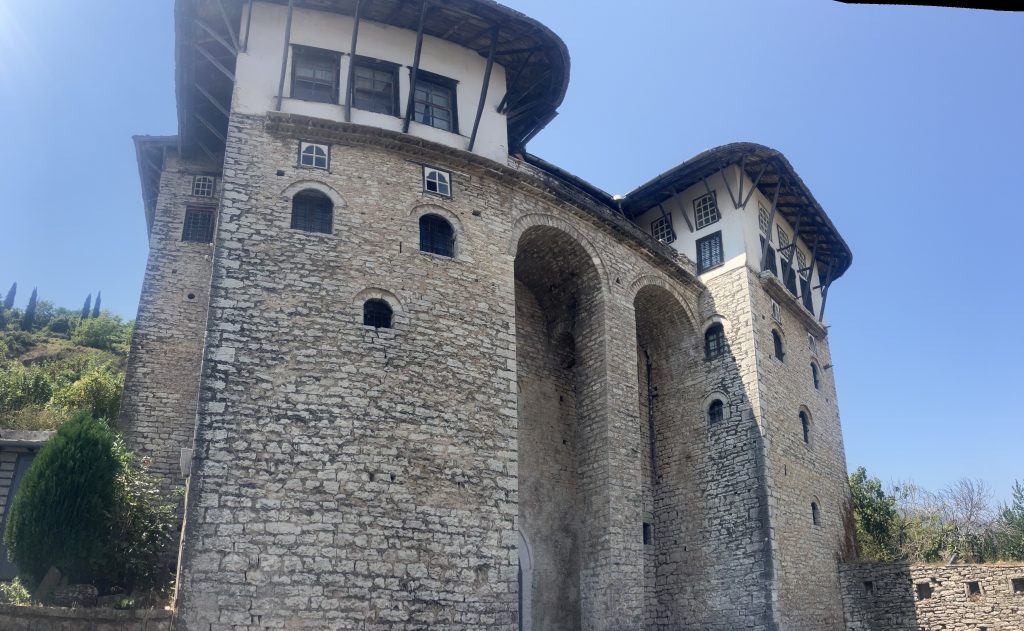
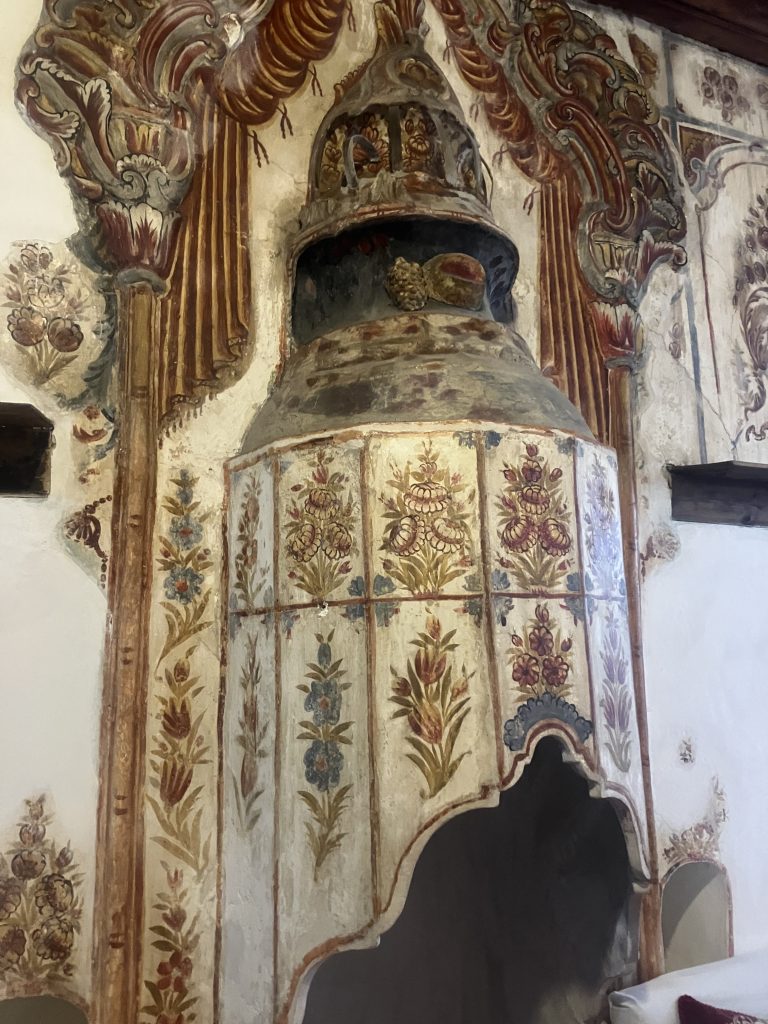
Gjirokaster was such an incredible city, we decided it really needed more time to explore. We took the bus directly one morning and gave ourselves the entire day there. The first stop was the Zekate house, one of the prime examples of the Ottoman fortress houses built into the hills during Ali Pasha’s rule in the 1900’s. This house was owned by one of the chief administrators and served as a four story fortress to ward off intruders, perched on top of the hill so the owner could survey his holdings, and featuring the most intricately decorated receiving room for important business guests.
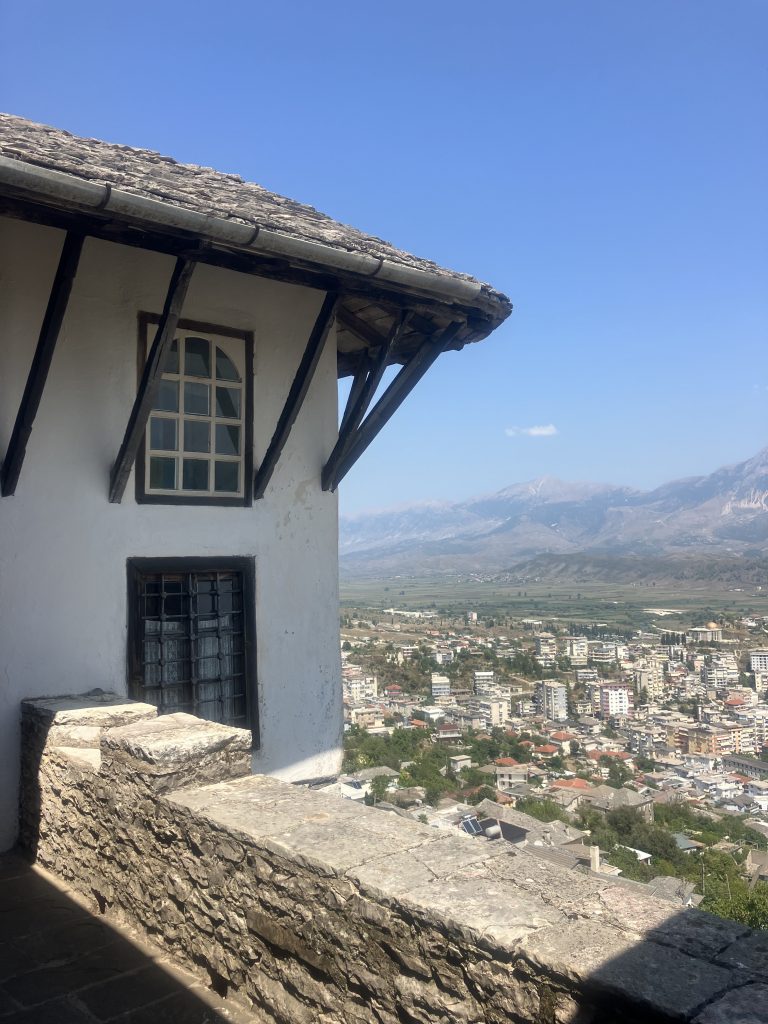
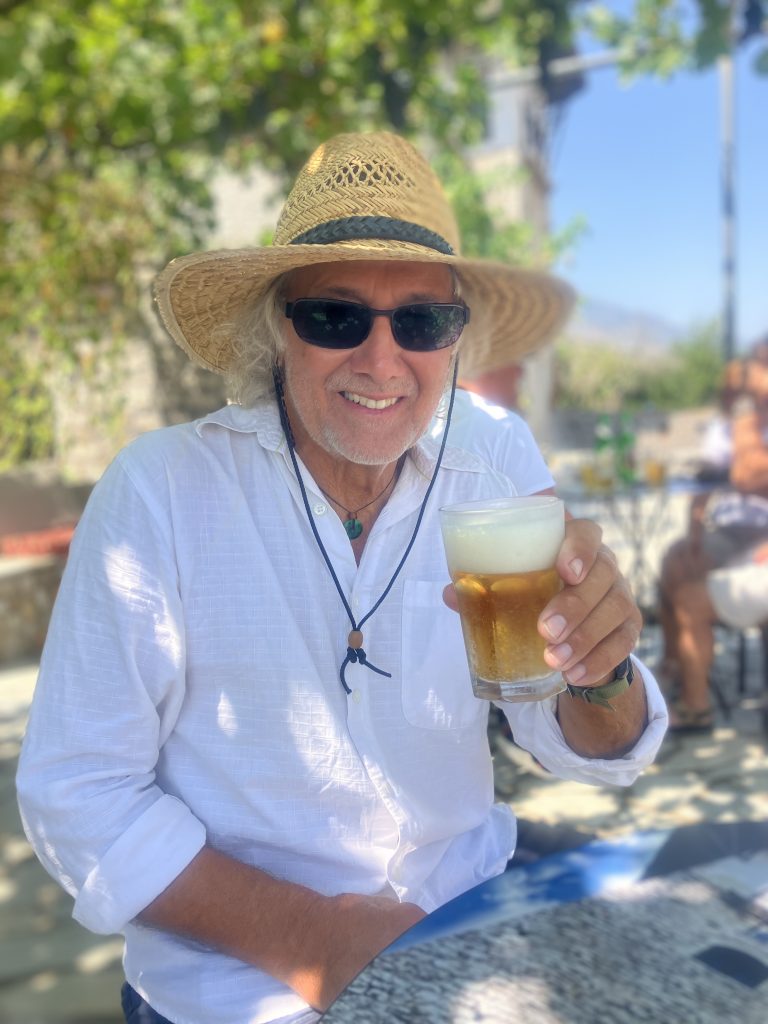
After touring the house we walked back to the castle, admiring the town architecture from up high in the hills. One of the most noticeable things were the stone roofs. Made from slate in the local hills, these roofs were developed by local masons, weigh thousands of pounds, yet manage to last centuries, despite earthquakes and other natural disasters.
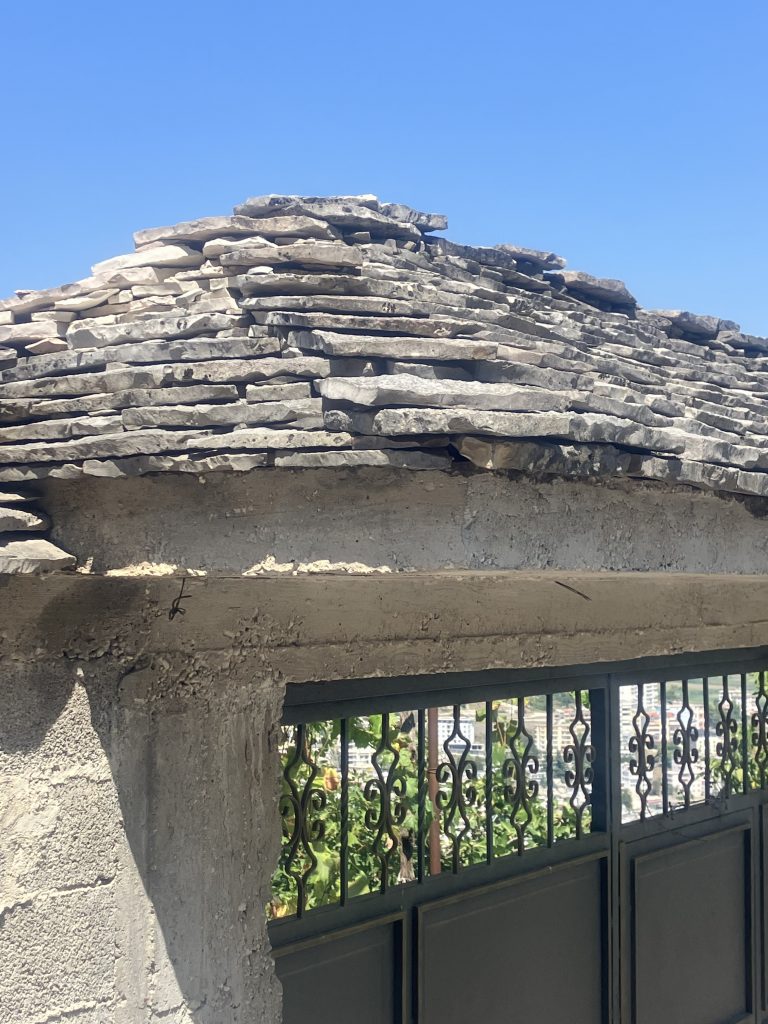
The castle was just as incredible a visit the second time. Having toured the external perimeter earlier, we headed straight to the museums this time. The curators give a very objective description of the brutal history that Albania has experienced. In particular the exhibits do not shy away from the fact that the castle was used as a prison, a particularly brutal one at that point in recent history (1930s through the 1960s). The walls of the former prison bear inscriptions of those who were imprisoned there.
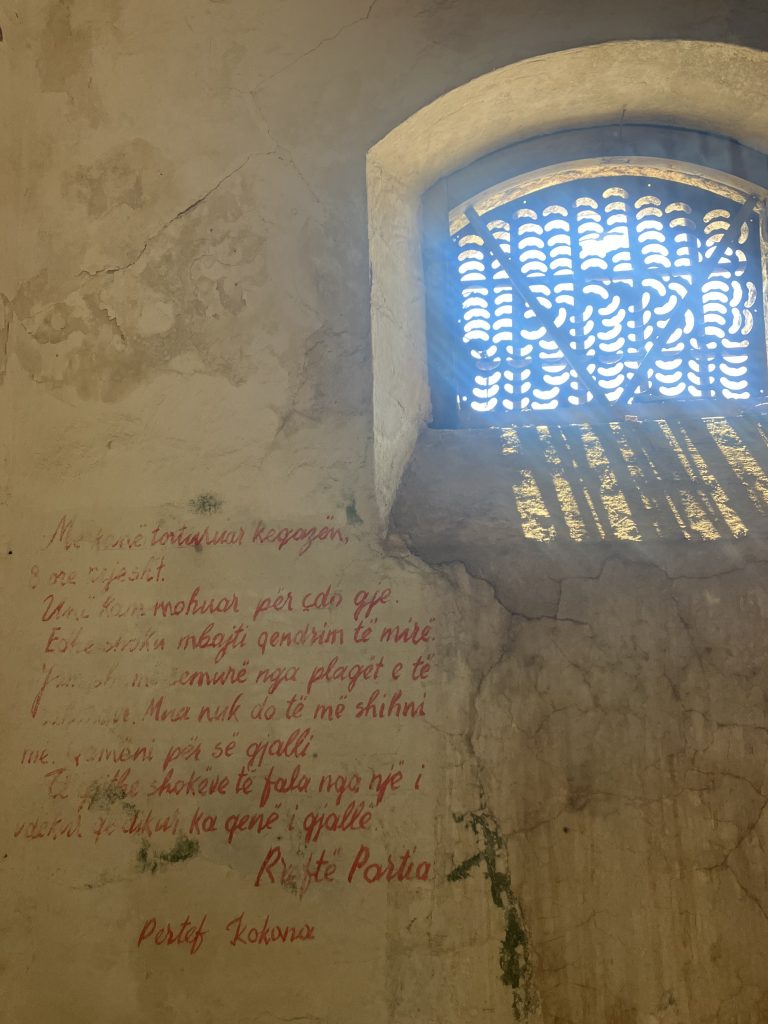
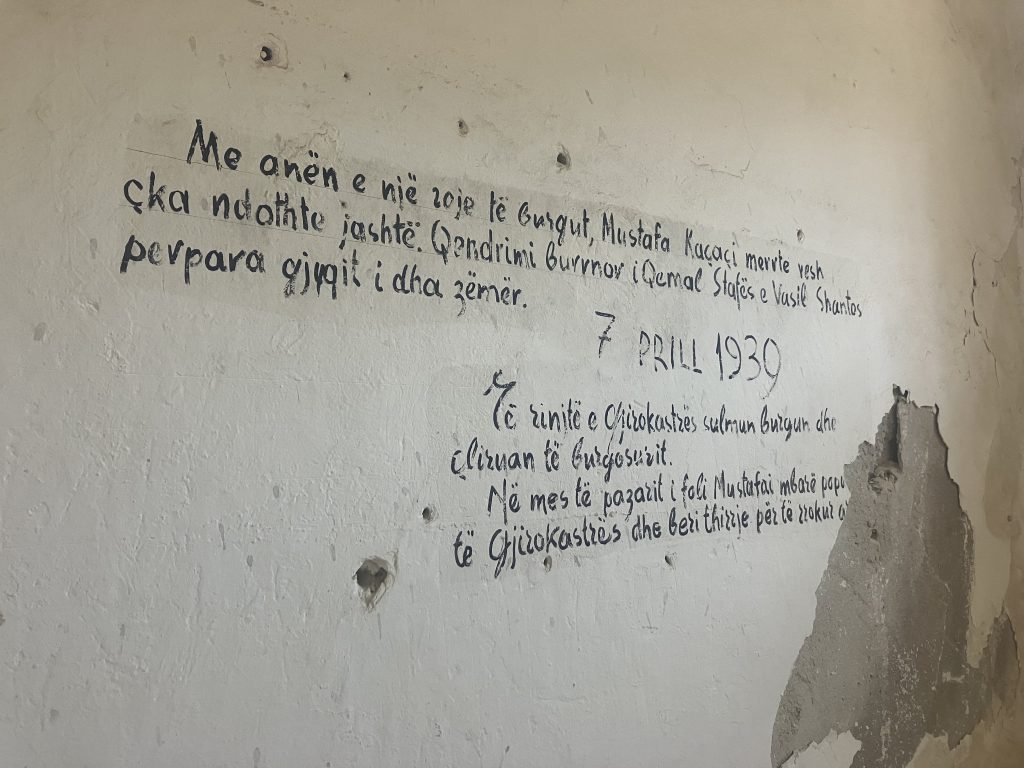
We then headed back down to the old town. During our first visit, I had admired the rugs available at the local shops. Trip dutifully took measurements of the two places left on the boat that warranted a rug. Unfortunately everything we looked at was the wrong dimension and generally much too big. A local shop owner asked what we wanted and pointed us across the street to a shop that featured hand made artisan rugs. Not only were we able to get a rug that featured the Albanian doubled headed eagle (dual authority in secular and religious state matters), we got to learn about the iconic shop we were in. It had been a local pub decades earlier and featured a water well going several hundred feet down. The current owner, Alma, bought the space in 1991 when communism fell, and has maintained its traditional decor and sourced her goods from local artisans ever since.
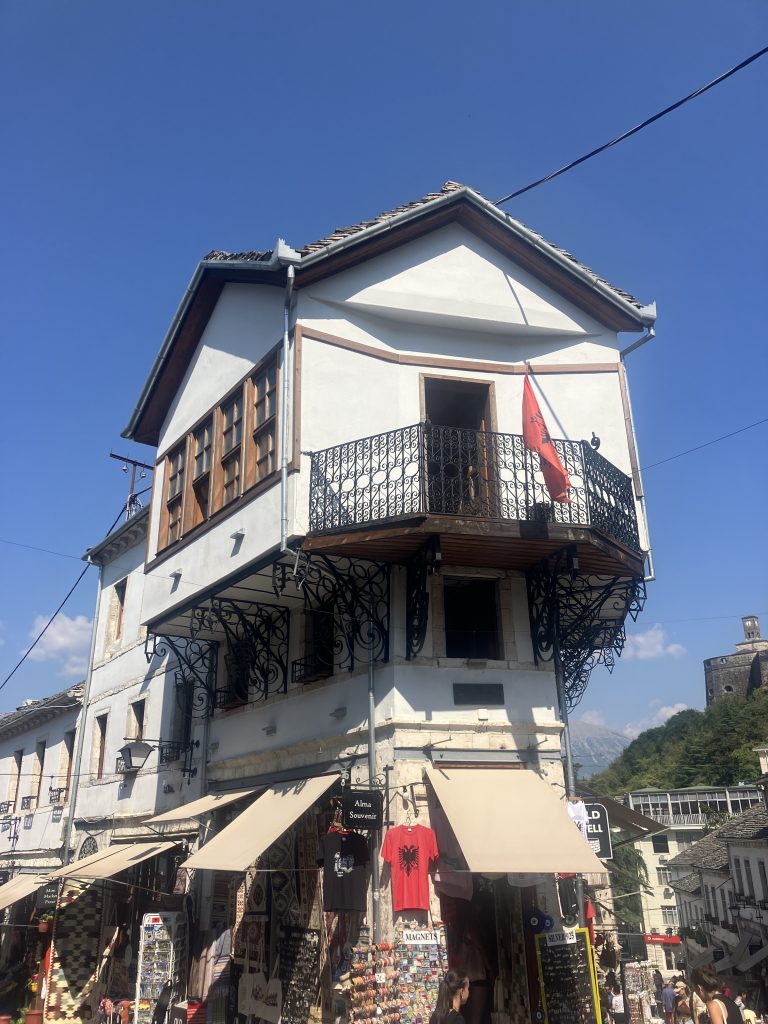
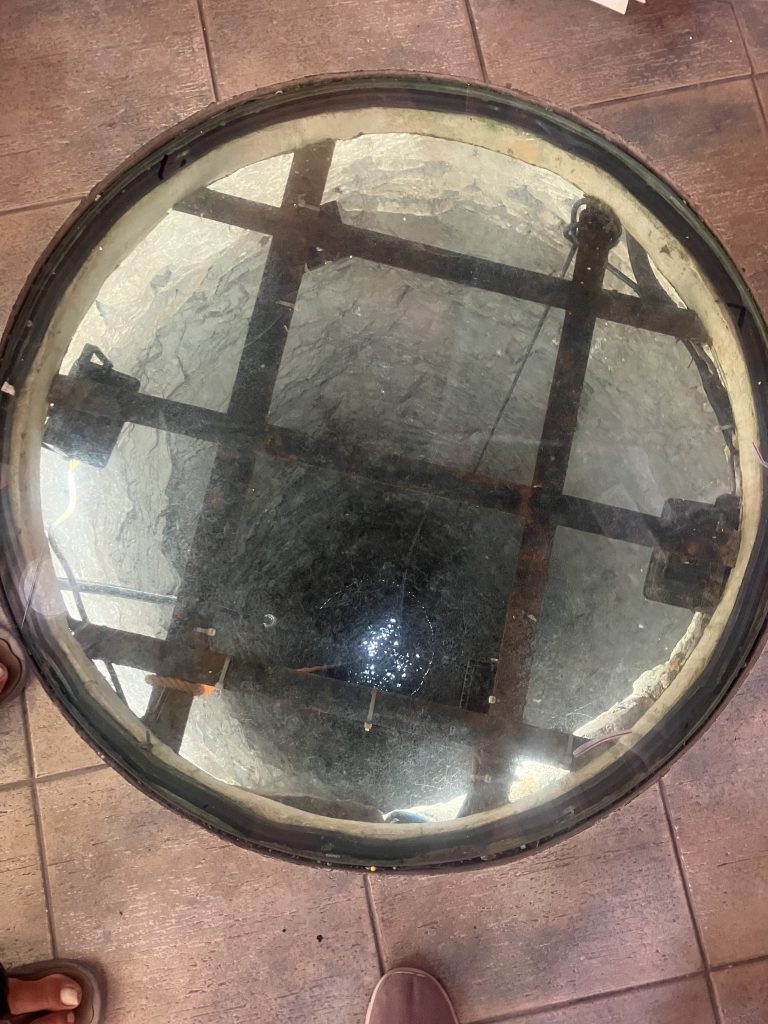
It was time for lunch, so we stopped in for a salad and a beer at a cute little restaurant with great retro decorations.
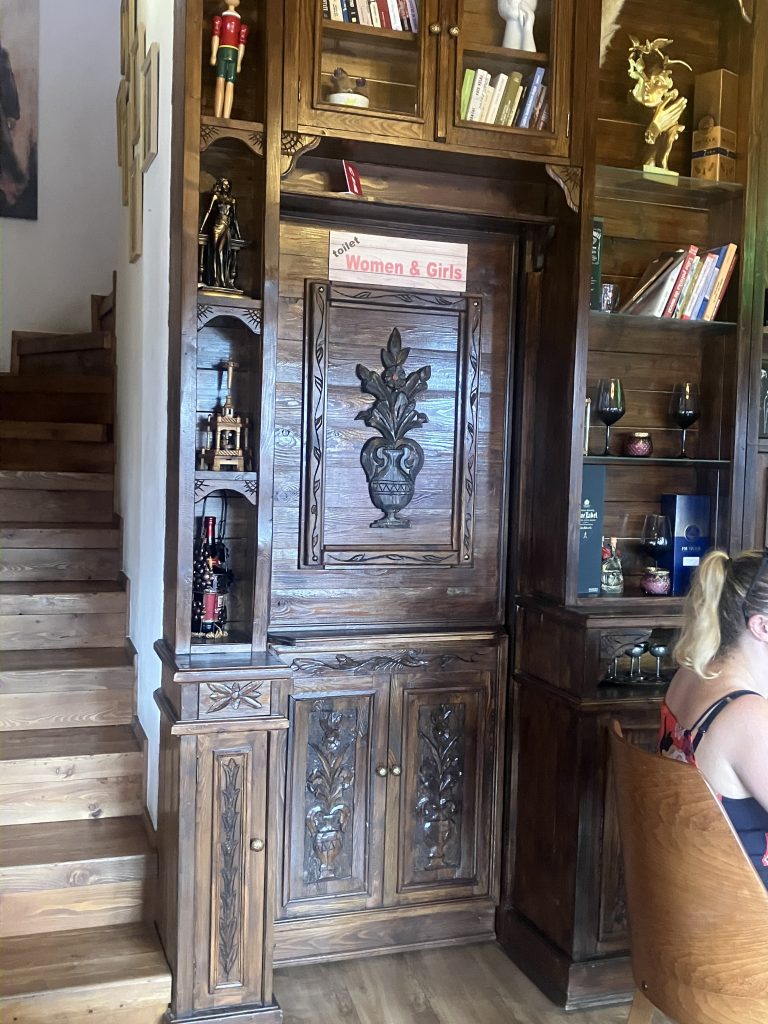
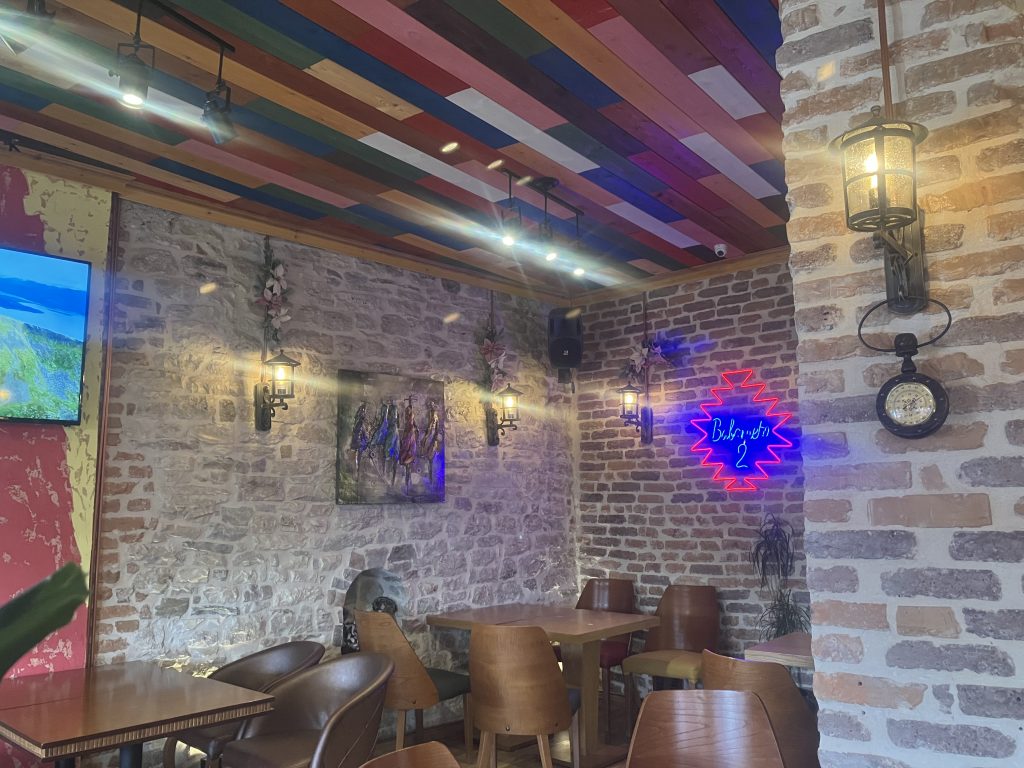
Our final stop in Gjirokaster were the Cold War tunnels. Albania’s infamous dictator, Enver Hoxha, had these constructed when he feared foreign attack, especially after the fallout with the Soviet Union. Built as an open secret in the 1970’s, the bunkers have 59 rooms that were to be used to house military and government functions in the case of a military attack. The interior was looted or destroyed in the 1990s, but the tunnels are left to explore with a guide. Locals talk cynically about the cost to build and maintain the tunnel, which was never used, in a time when most of the local population was starving.
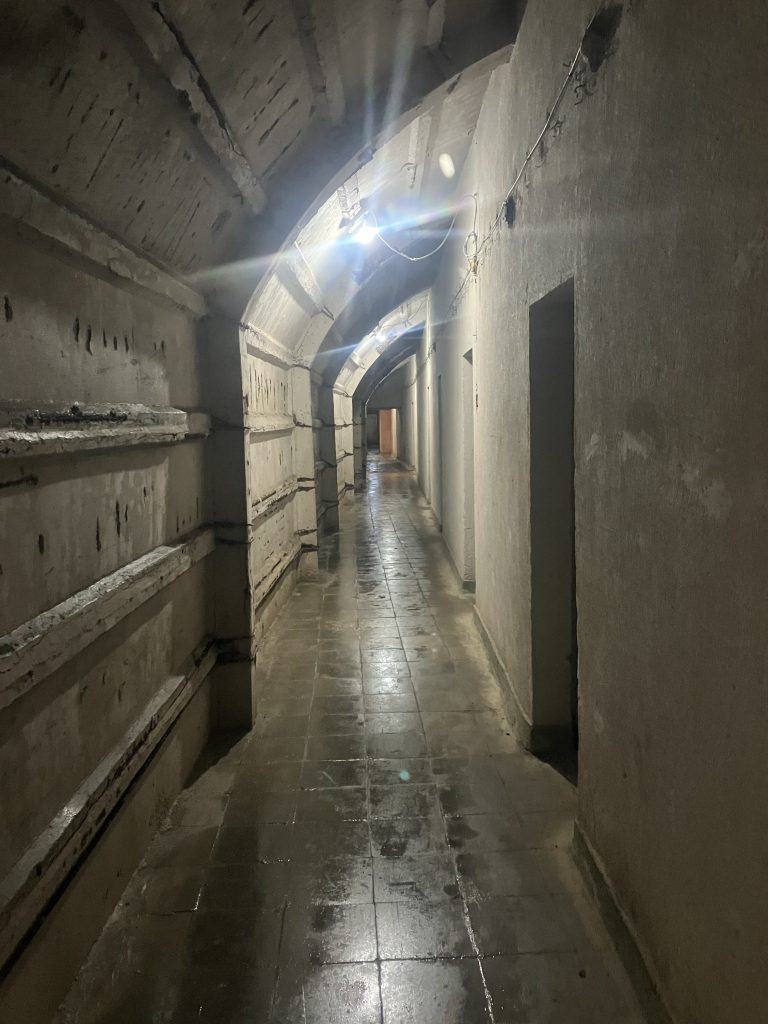
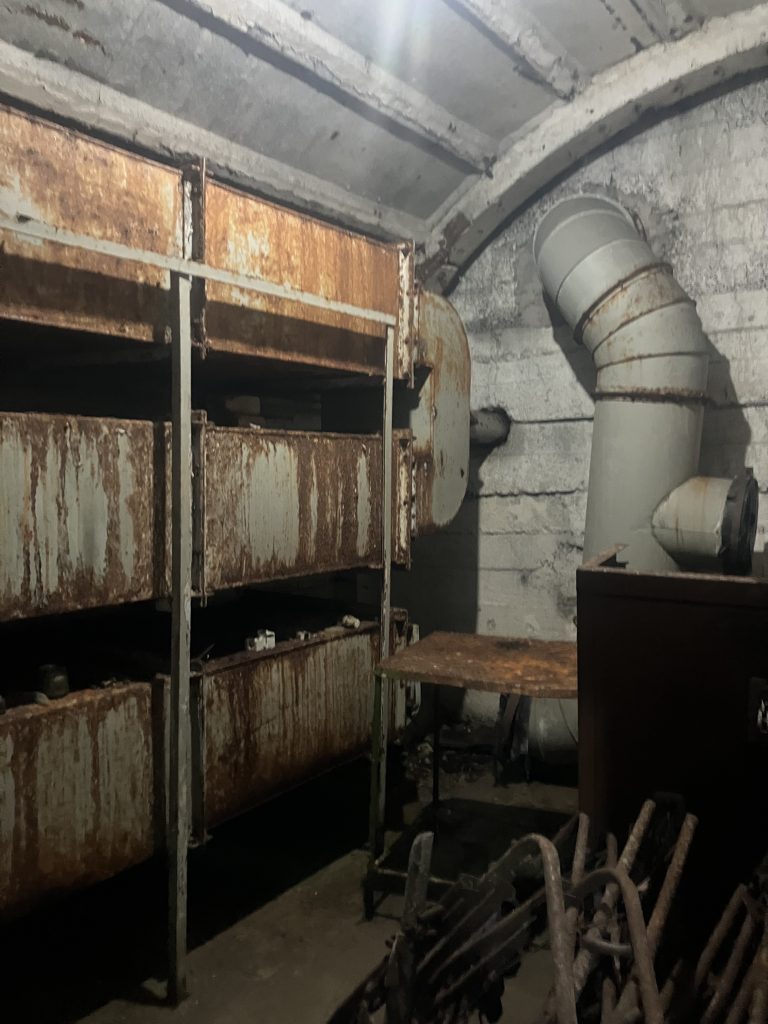
We had to race to catch the last bus of the day back to Sarande, and we felt like we could have stayed another day or two, but we had gotten a little bit deeper into one of Albania’s historic towns.

Recent Comments